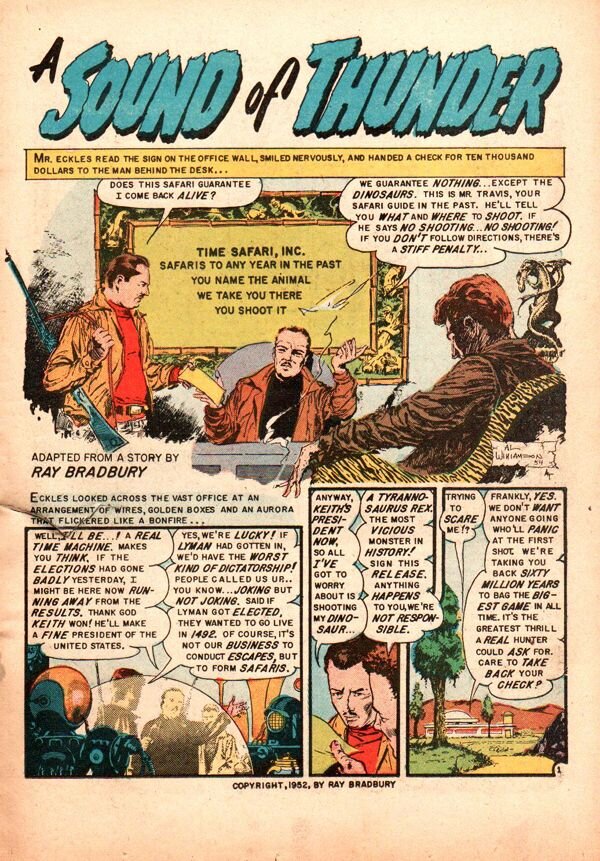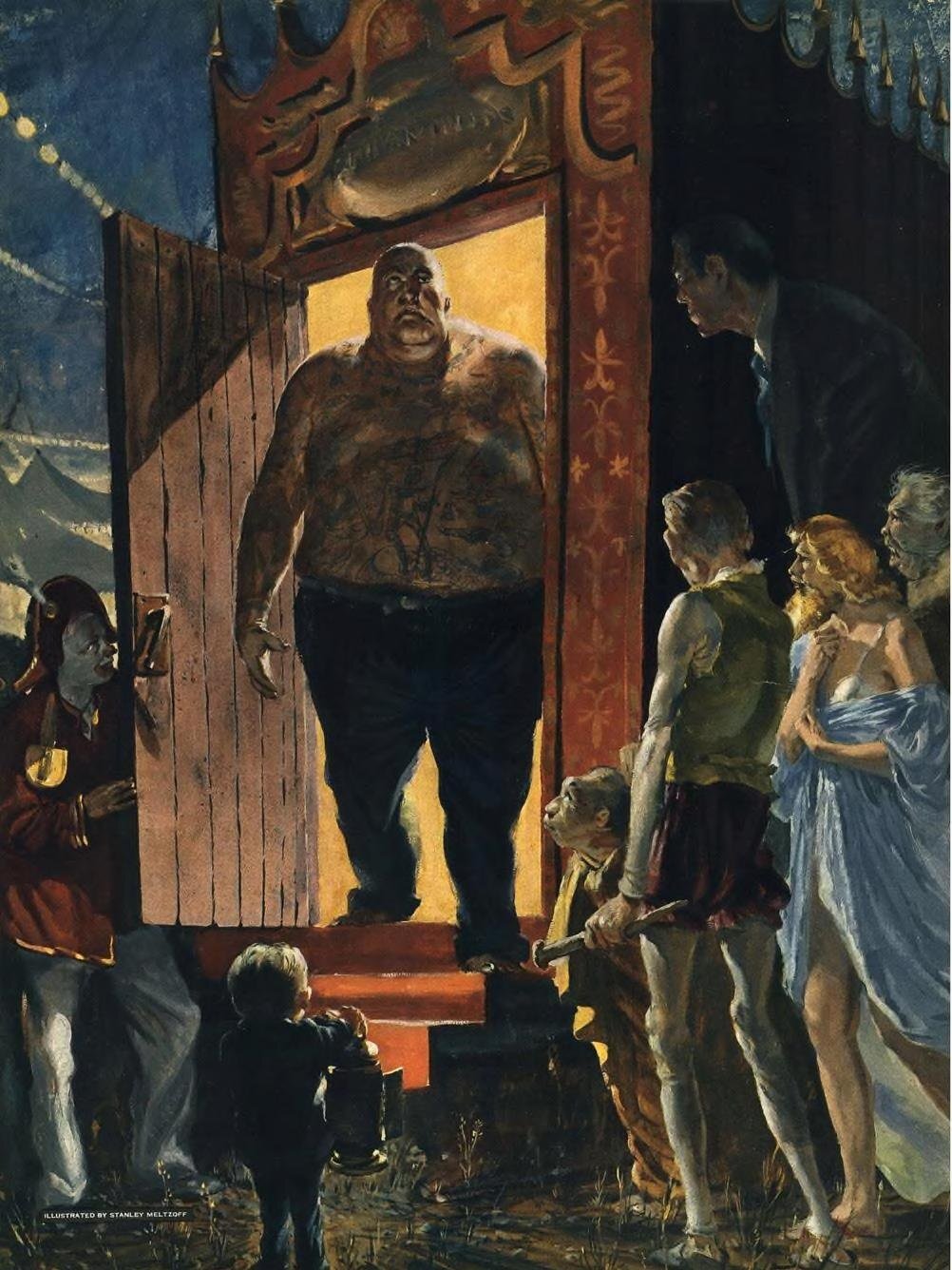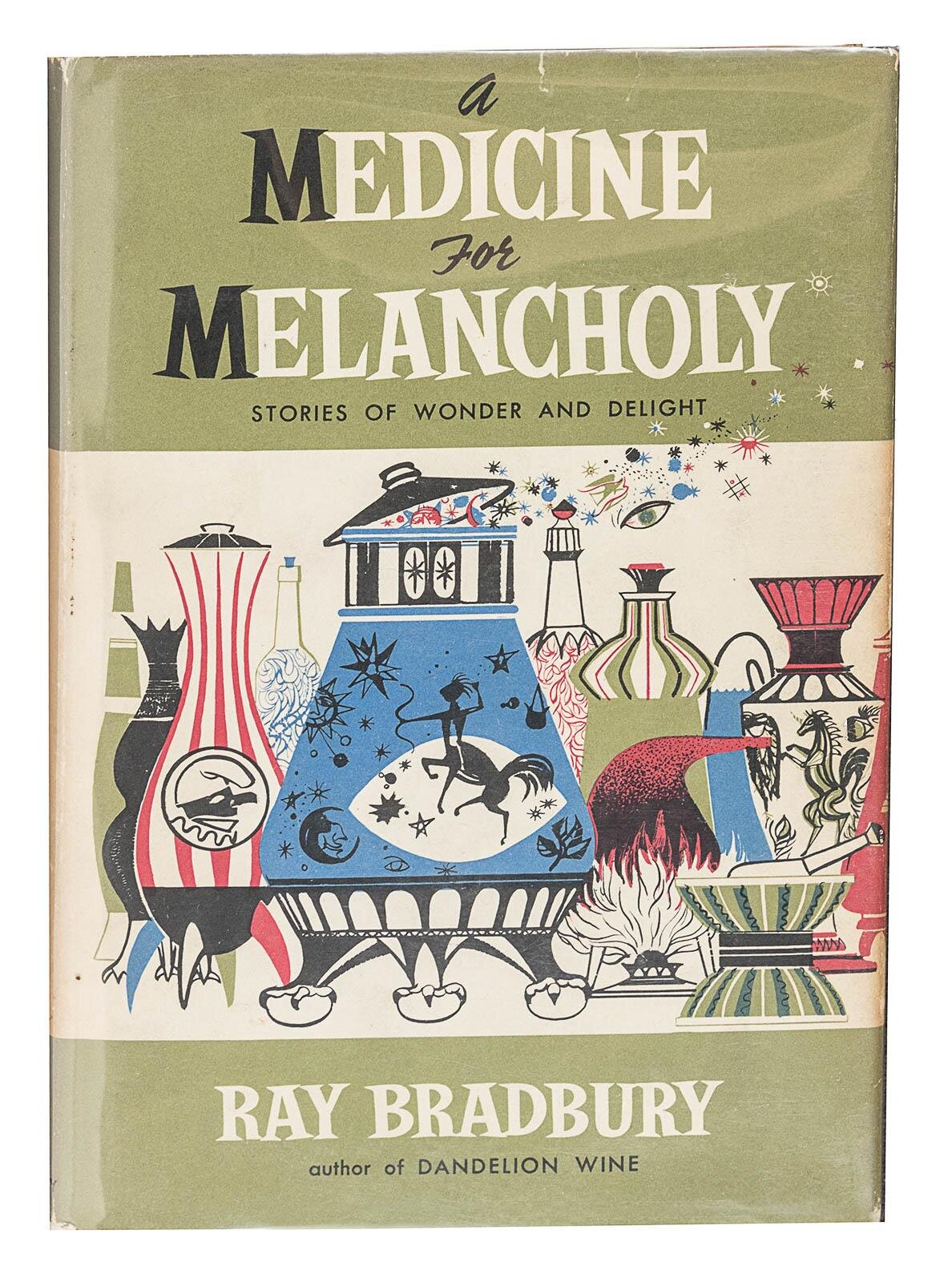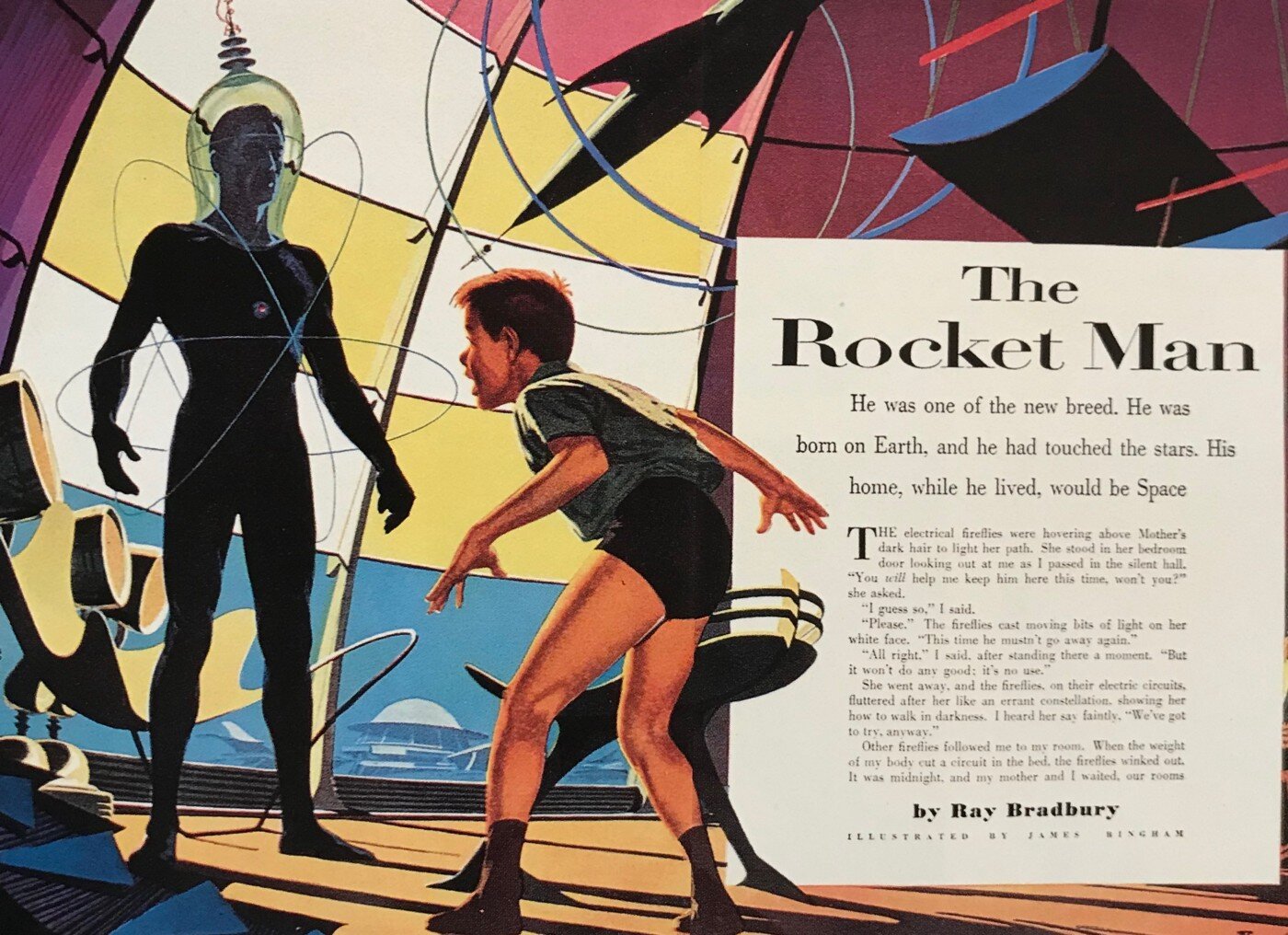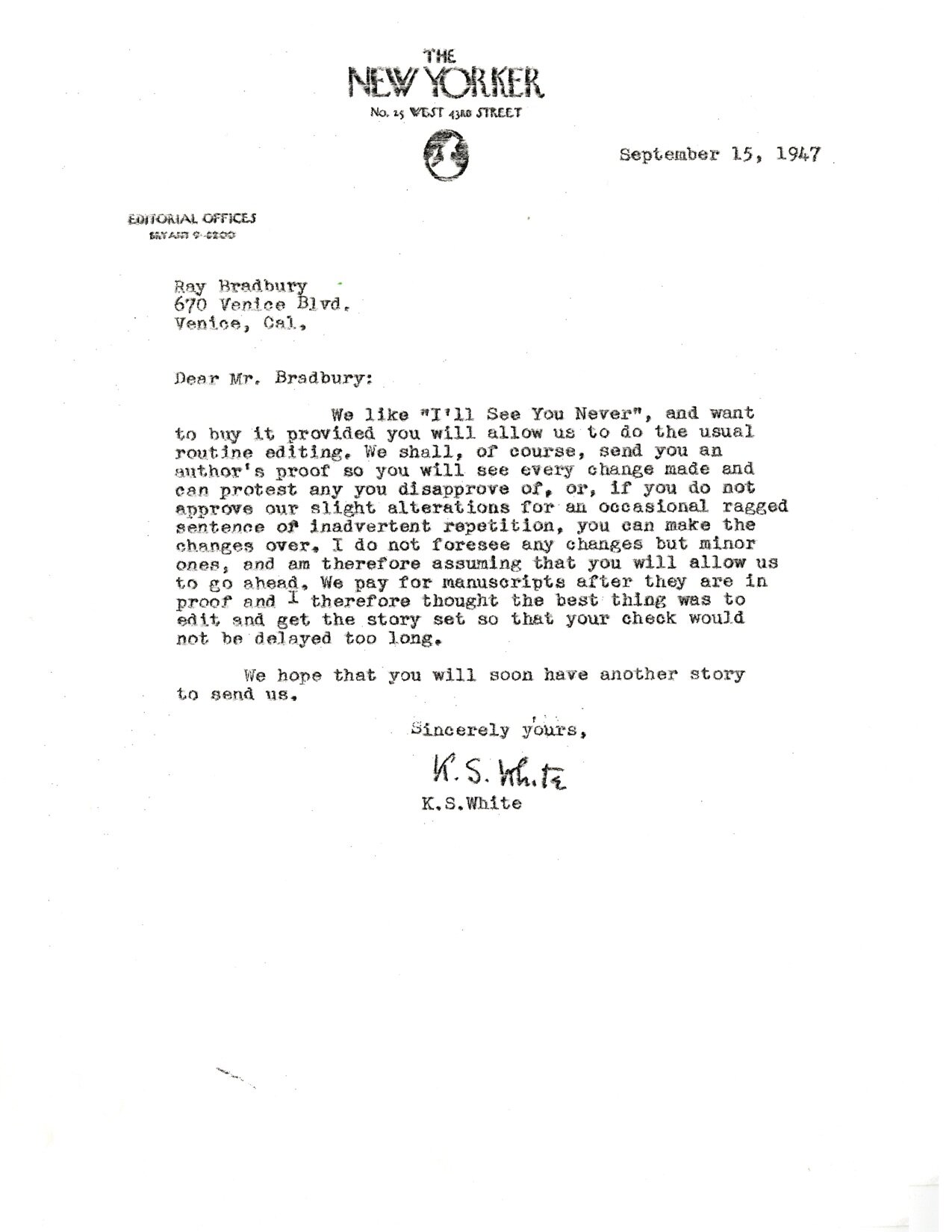Where to Find It: The Golden Apples of the Sun, Bradbury Stories
First Published: The Reporter, August 7, 1951
Plot Synopsis: Leonard Mead, a resident in an unnamed city in the year 2053, takes long walks each night and never encounters any other pedestrians. He is the only one savoring the night, outside in the fresh air, away from his electronic devices, gaining a form of freedom, when a self-driving police car pulls up to arrest him for his activities.
Backstory: As Ray Bradbury often told the story, it was a late, windy autumn night in late 1940s Los Angeles, the Santa Ana breeze carrying the scent of cinders. Ray and a friend had finished dinner at a restaurant in the mid-Wilshire district of Los Angeles and were walking to a bus stop, deep in conversation. (Neither man owned an automobile.) As he walked, Ray munched on some soda crackers, a box of which, in his typically eccentric fashion, he had brought with him to and from the restaurant. A police car wheeled up beside them. An officer stepped out and approached the two men. He asked what they were doing.
“Putting one foot in front of the other,” said Ray, his mouth full of crackers.
Displeased, the officer asked again what they were doing.
“Breathing the air,” said Ray, “talking, conversing, walking.”
As Ray spoke to him, bits of cracker flew from his mouth, dusting the police man’s uniform. The officer flicked the crumbs from his chest and shoulders.
“It’s illogical, your stopping us,” Ray continued. “If we wanted to burgle a joint or rob a shop, we would have driven up in a car, burgled or robbed, and driven away. As you see, we have no car, only our feet.”
The police officer was skeptical of the two men out late walking in a city not known for foot traffic. He also took with Ray Bradbury as a smart-ass. (In actuality, Ray was just being Ray, innocently impudent, a little naïve.)
As Ray recalled it, the officer was somewhat adjutated.
“Walking, eh?” he said. “Just walking?”
Ray and his friend nodded, wondering if they were the victims of some sort of prank.
“Well,” the officer said, “don’t do it again!”
The officer returned to his patrol car and drove off into the night.
Incensed, Ray went home and wrote “The Pedestrian,” a story about a future society where walking is forbidden and all pedestrians treated as criminals.
Critique:
“The Pedestrian” is one of Ray Bradbury’s earliest forays into dystopian fiction. This satirical look at a near-future world where a media-addicted populace no longer takes simple, reflective walks, inverts the societal norms of our present times and posits their total disappearance. People in the year 2053 no longer walk anywhere. Ray Bradbury extrapolated his own experience with the police officer (and his broader observations of the demise of walking culture in Los Angeles) and examined it through the genre of science fiction. What would happen if walking was illegal? Why would it be outlawed? Most science fiction revolves around the “what-if” premise, and here the author ponders, what if people stopped walking places?
But perhaps most important about “The Pedestrian” is that it directly led Bradbury to writing Fahrenheit 451. Two years after the publication of “The Pedestrian,” Bradbury took another character out for a walk in a lonely, tech-dependent world, this time a fireman named Guy Montag who burns books for a living. On a walk after work, he encounters another pedestrian, Clarisse McClellan and the novel begins…
With “The Pedestrian,” Ray Bradbury was experimenting with the central themes and ideas of Fahrenheit 451: the proliferation of mass media as a societal opiate; the ostracization of the individual for participating in what are deemed “regressive” activities, and, of course—censorship.
Metaphor Alert:
Bradbury refers to automobiles seen from a distance as “Beetles,” a metaphor he used in his 1947 short story “Jack-in-the-Box” and again in Fahrenheit 451. He obviously liked this description!
#12 “THE DRAGON”










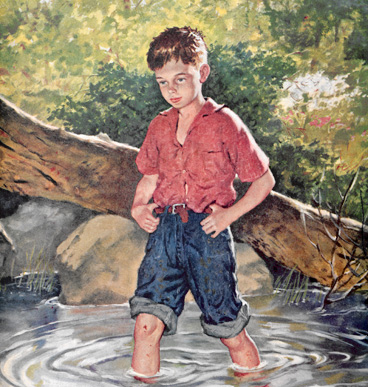
![r-is-for-rocket-s-is-for-space-signed-traycased-hardcover-by-ray-bradbury-[3]-4726-p.png](https://images.squarespace-cdn.com/content/v1/57d19f2f8419c29c4c3d9b82/1553889142081-4YDUJY5EY92L2GEQK67F/r-is-for-rocket-s-is-for-space-signed-traycased-hardcover-by-ray-bradbury-%5B3%5D-4726-p.png)





